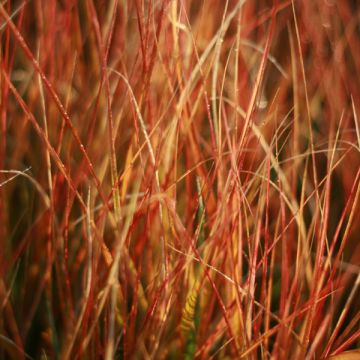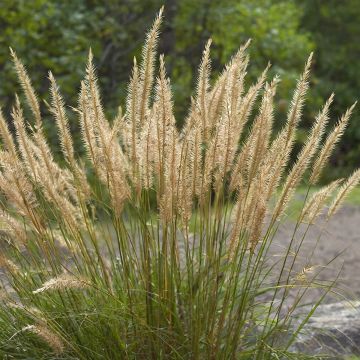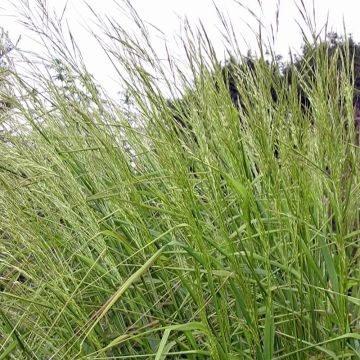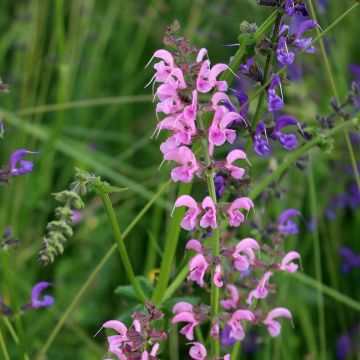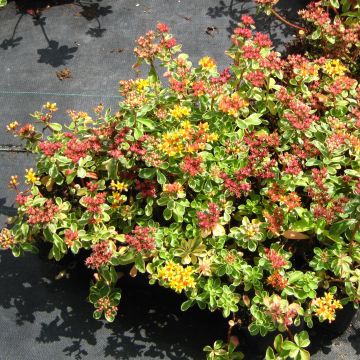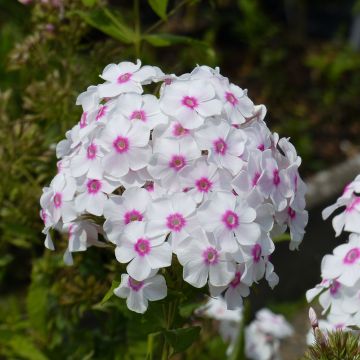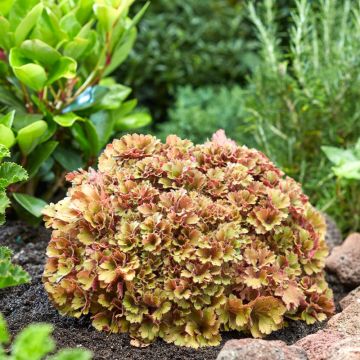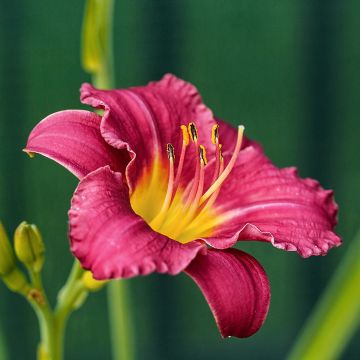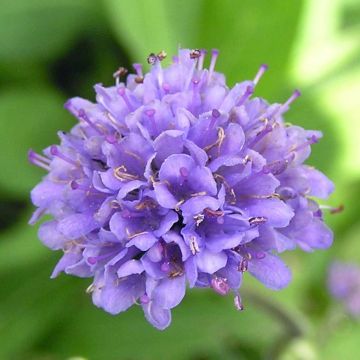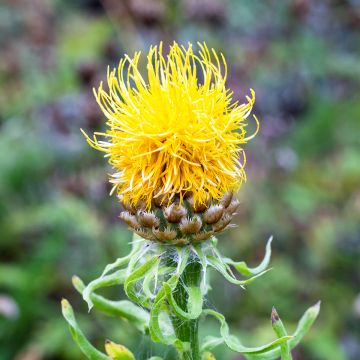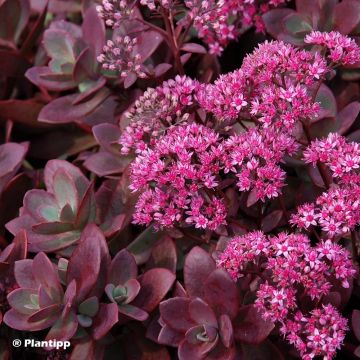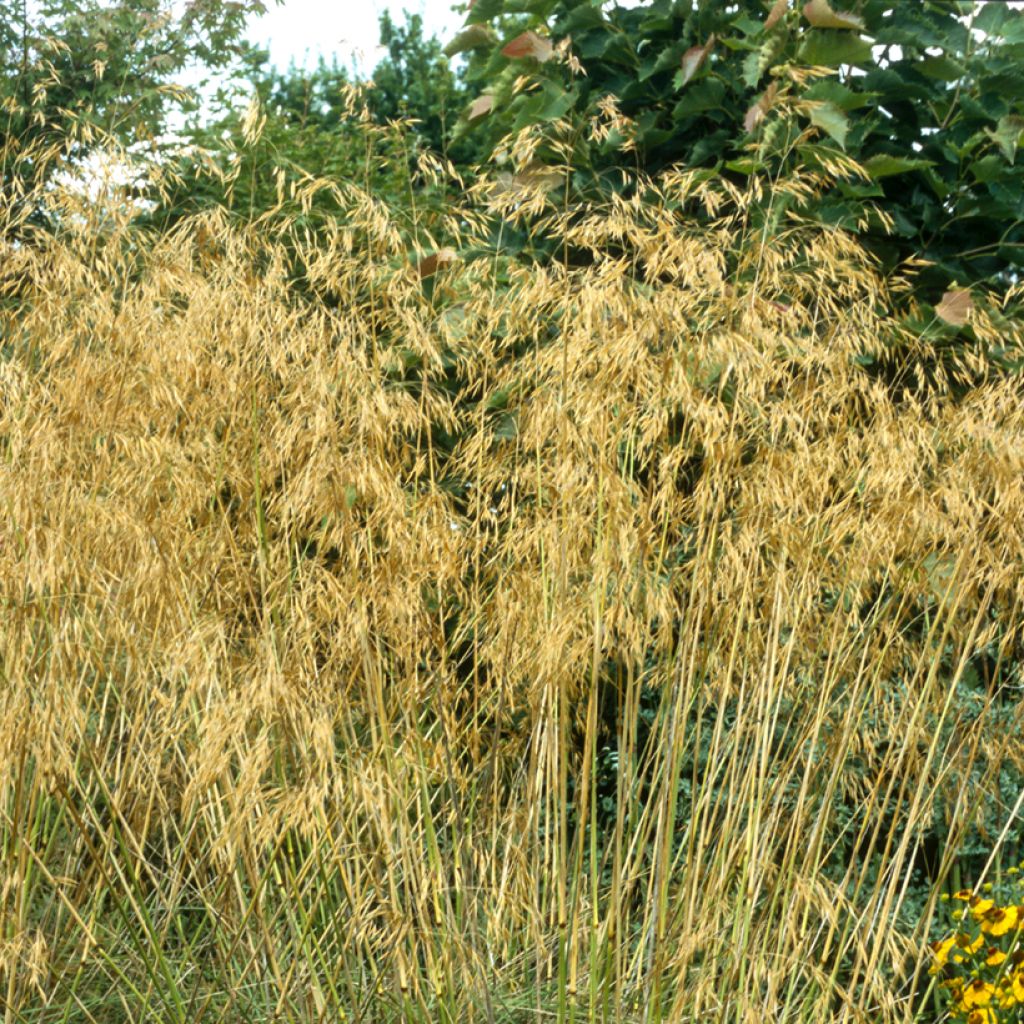

Stipa gigantea
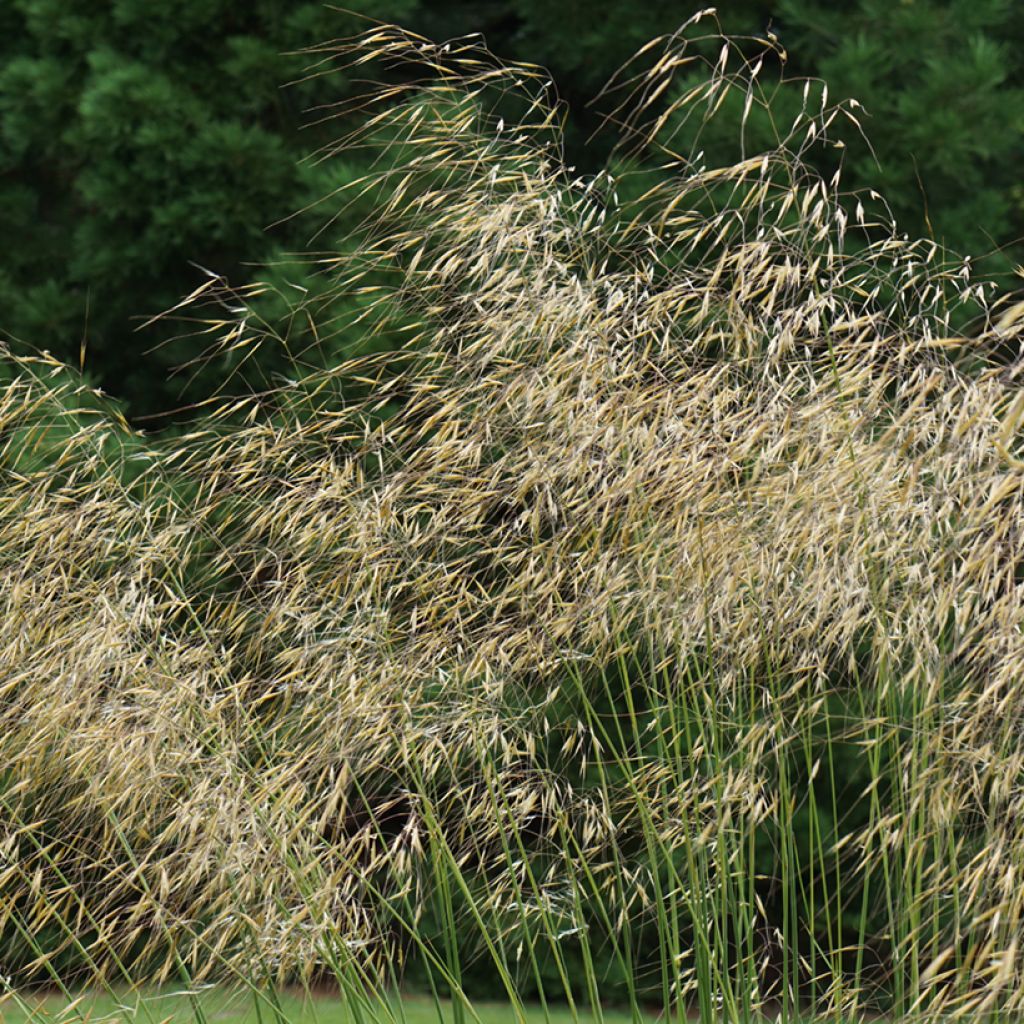

Stipa gigantea
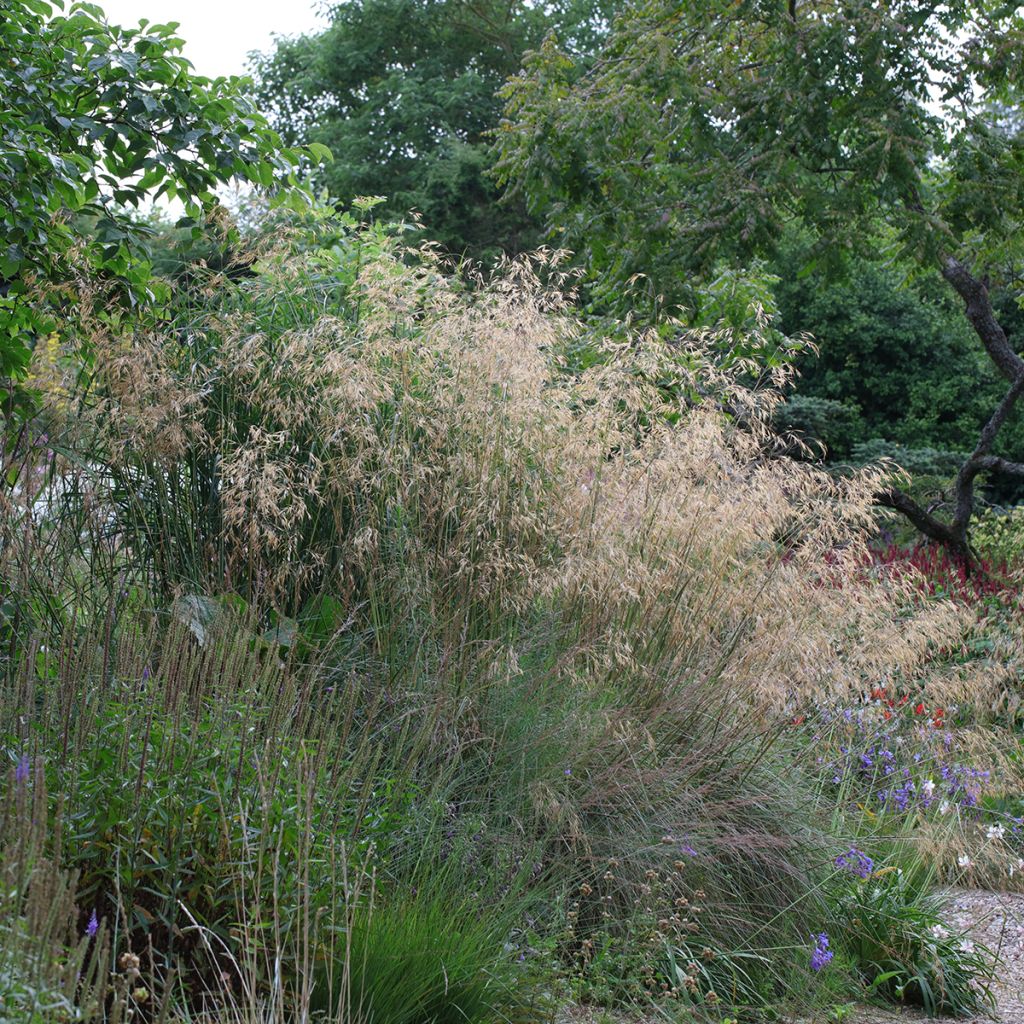

Stipa gigantea
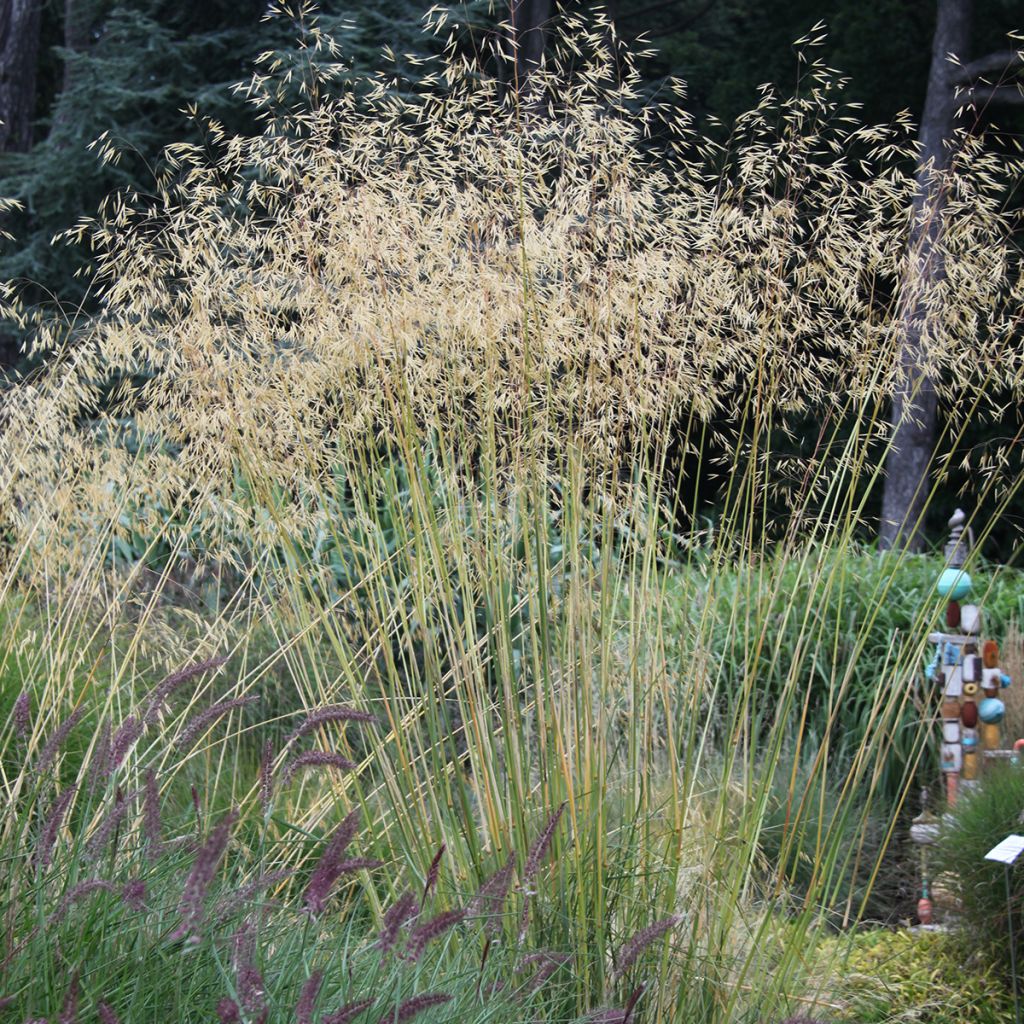

Stipa gigantea
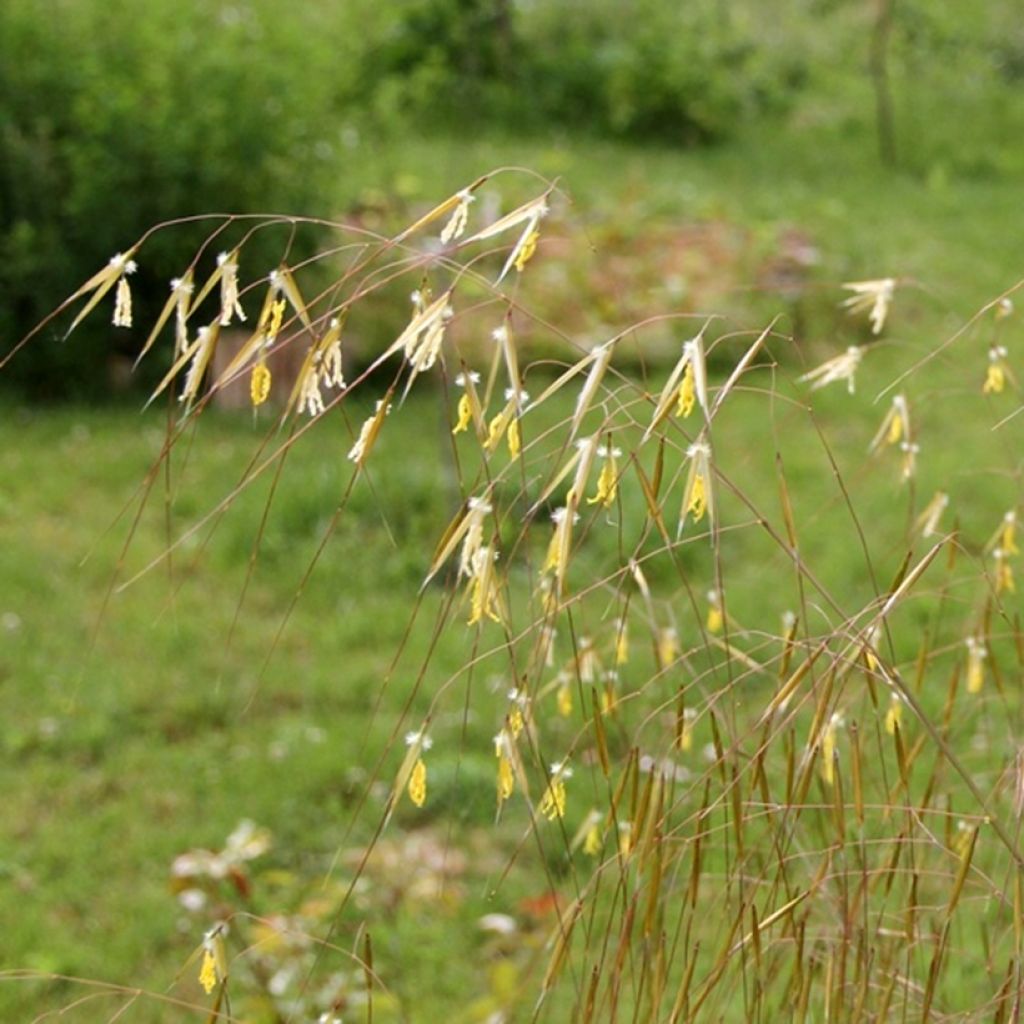

Stipa gigantea
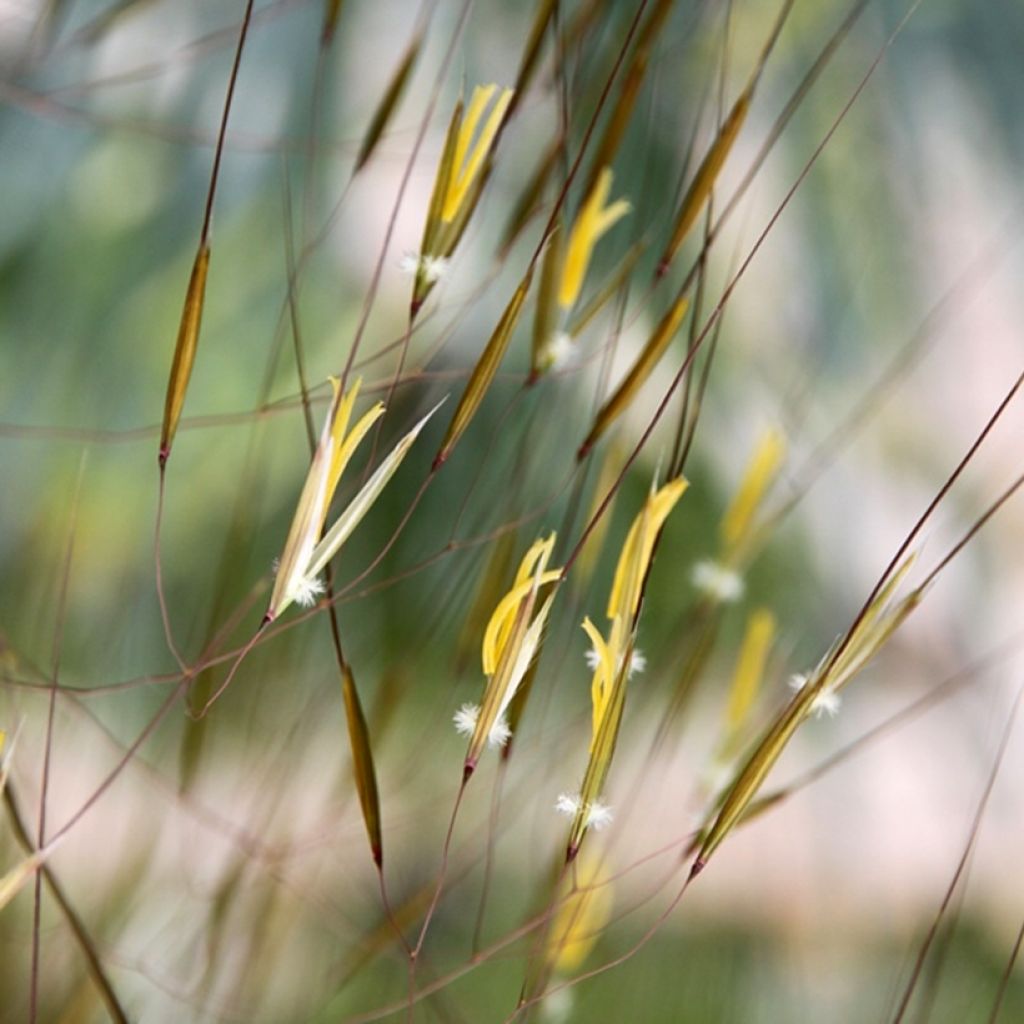

Stipa gigantea
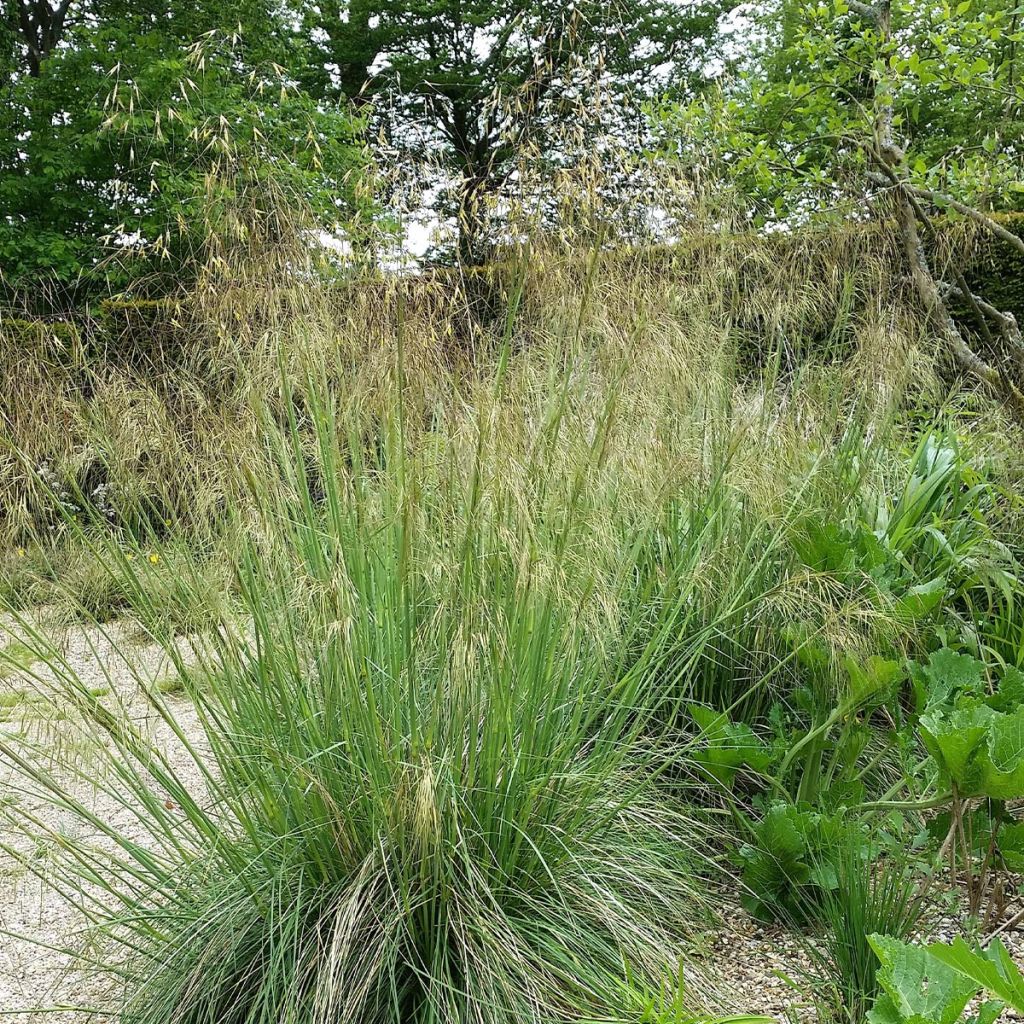

Stipa gigantea
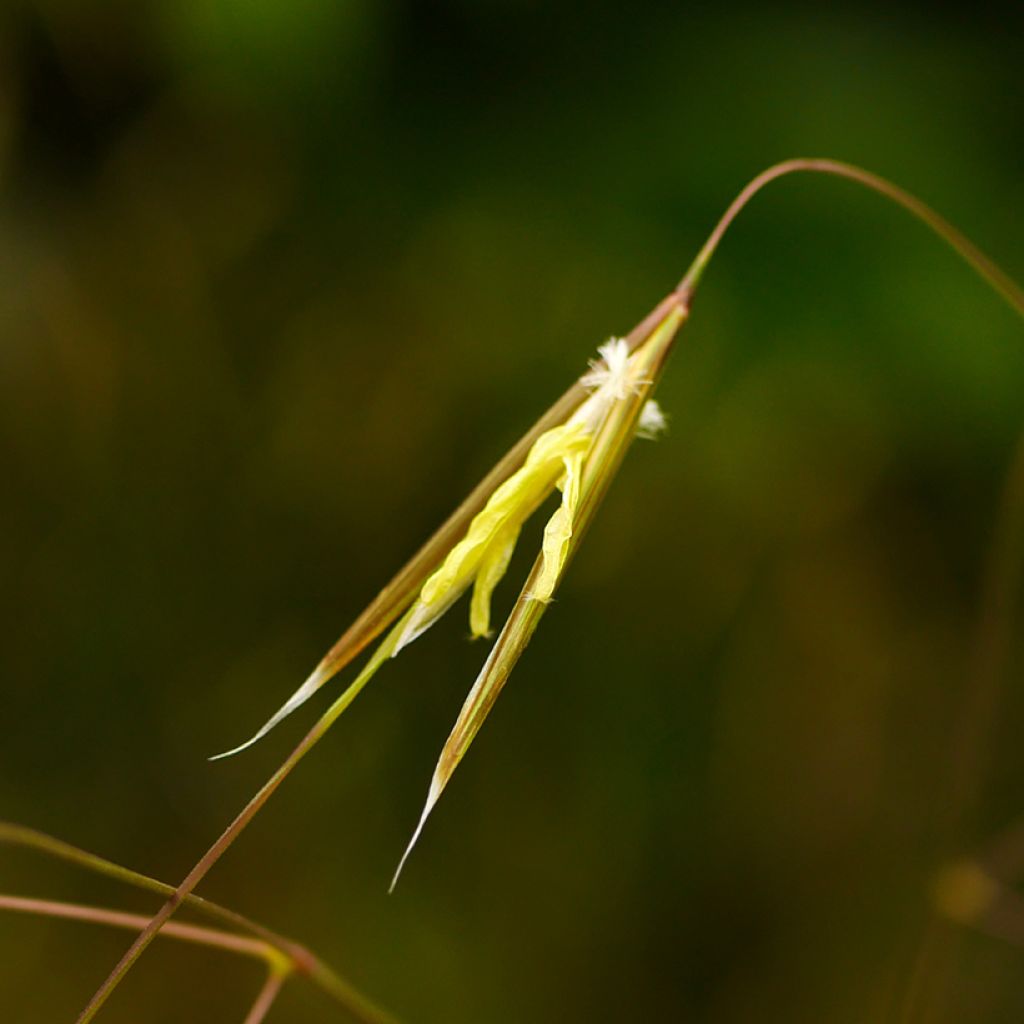

Stipa gigantea
Stipa gigantea
Stipa gigantea
Giant Feather Grass, Golden Oats
This item cannot be shipped to the selected country
Delivery charge from €5.90
Delivery charge from €5.90
More information
Schedule delivery date,
and select date in basket
This plant carries a 12 months recovery warranty
More information
We guarantee the quality of our plants for a full growing cycle, and will replace at our expense any plant that fails to recover under normal climatic and planting conditions.
From €5.90 for pickup delivery and €6.90 for home delivery
Express home delivery from €8.90.
From €5.90 for pickup delivery and €6.90 for home delivery
Express home delivery from €8.90.

Does this plant fit my garden?
Set up your Plantfit profile →
Description
The Stipa gigantea, or Giant Feather Grass, is a perennial grass that is robust, spectacular and highly ornamental. Its very fine foliage, with a shiny green colour, gathered in a dense tuft, forms a compact mass adorned in May-June with gracefully arching panicles of inflorescences, carried at human height by solid and slender stems. Purple-silver in early summer, they take on a golden hue in winter and remain decorative for a long time on a more or less evergreen plant. This vigorous stipa retains its elegance for a long time and is not invasive. While it represents a charming asset for all gardens, it is a boon for dry and poor soils!
The Stipa gigantea is part of the large family of grasses. This perennial grass, native to Spain, Portugal and Morocco, is a plant perfectly adapted to summer drought, even to arid situations. Its hardiness is around -12/15 °C (10.4/5°F). The giant feather grass is anchored on short rhizomes that spread slowly and, in 3 or 4 years, form a bristling tuft slightly arched, 55-60 cm (22-24in) high and 50 cm (20in) wide for the foliage. This, evergreen in mild climates, is composed of long, very narrow, leathery leaves covered with a shiny cuticle. The flowering resembles that of oats. It begins in late spring, usually in May, and continues until July. Numerous solid stems, 1.80 m (6ft) to 2 m (7ft) tall, emerge from the foliage, bearing at their ends pendulous, 20 cm (8in) long, fluffy, silver spikes that move at the slightest breath of air. They turn golden in winter and persist on the plant until December. This grass does not self-sow as easily as some of its cousins.
The giant feather grass prefers acid to neutral, dry to damp, but light and even rocky soils. It can be used in mass plantings or even as a standalone in a minimalist garden, planted in groups of 3 specimens in front of the dark background of a conifer (Thuja occidentalis Emerald, Taxus baccata, Juniperus communis Hibernica) or an evergreen shrub (Eleagnus ebbingeii, Myrtus communis, Myrsine africana, boxwood, Cotoneaster lacteus, Lonicera nitida). Like all ornamental grasses, it lightens the flowering of heavier perennials such as peonies, daylilies or dry-soil irises. In a wildflower meadow, it can be paired with asters, rudbeckias or tall sedums. Grasses bring movement and naturalness to the garden. They are interesting for their striking display in the garden at the end of summer and autumn when their dried flower heads remain major focal points. Its flowers, picked in the heart of summer, can be used in dried flower arrangements.
Report an error about the product description
Stipa gigantea in pictures
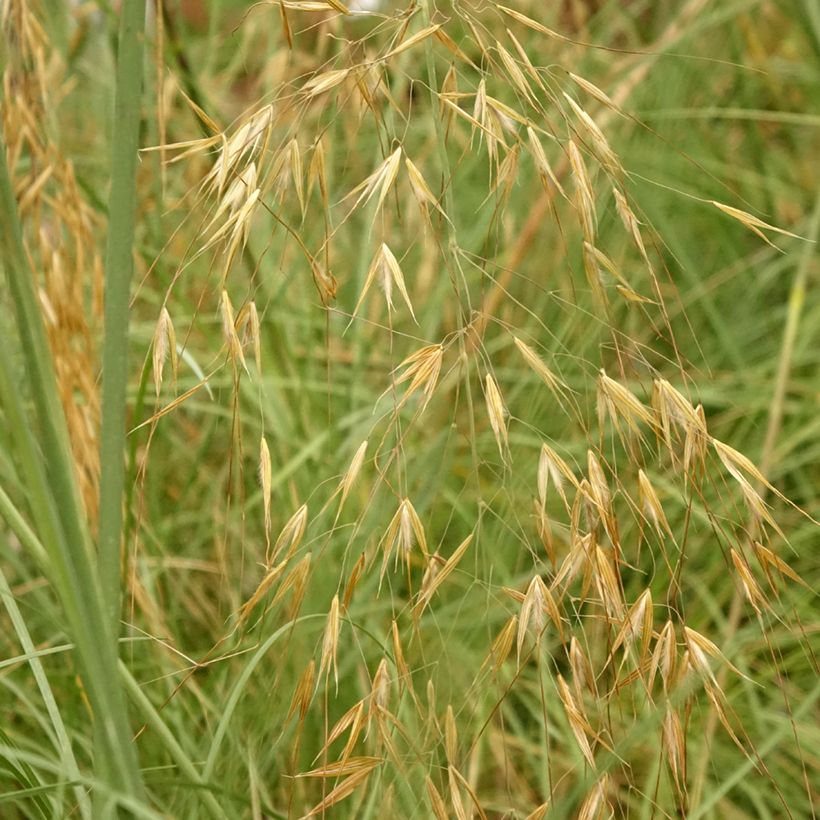

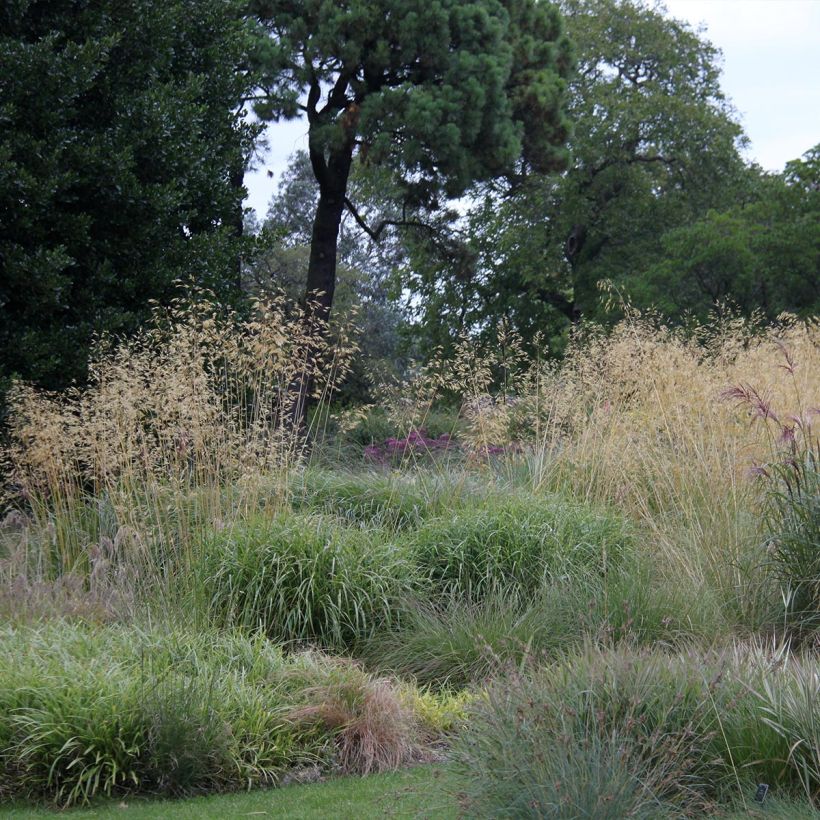

Flowering
Foliage
Plant habit
Botanical data
Stipa
gigantea
Poaceae
Giant Feather Grass, Golden Oats
Mediterranean
Other Stipa
Planting and care
Stipa gigantea is best planted in full sun, in light, neutral or acidic soil, even stony or sandy soil. Fresh soil, if perfectly healthy in winter and well-drained, will allow faster growth and give the plant a more luxurious appearance. It is preferable to plant this young plant in cold regions in spring, after frost. In hot and dry climates, on the other hand, it should be planted in October to allow it to establish before summer arrives. This plant is hardy up to -12/-15°C (10.4/5°F) if the soil does not retain stagnant moisture in winter. A spring fertiliser application in poor soil stimulates the shoot growth of new foliage. Remove damaged foliage in late winter by raking it, but never cut it down to the ground, as you risk killing it.
Planting period
Intended location
Care
-
, onOrder confirmed
Reply from on Promesse de fleurs
Summer flowering perennials
Haven't found what you were looking for?
Hardiness is the lowest winter temperature a plant can endure without suffering serious damage or even dying. However, hardiness is affected by location (a sheltered area, such as a patio), protection (winter cover) and soil type (hardiness is improved by well-drained soil).

Photo Sharing Terms & Conditions
In order to encourage gardeners to interact and share their experiences, Promesse de fleurs offers various media enabling content to be uploaded onto its Site - in particular via the ‘Photo sharing’ module.
The User agrees to refrain from:
- Posting any content that is illegal, prejudicial, insulting, racist, inciteful to hatred, revisionist, contrary to public decency, that infringes on privacy or on the privacy rights of third parties, in particular the publicity rights of persons and goods, intellectual property rights, or the right to privacy.
- Submitting content on behalf of a third party;
- Impersonate the identity of a third party and/or publish any personal information about a third party;
In general, the User undertakes to refrain from any unethical behaviour.
All Content (in particular text, comments, files, images, photos, videos, creative works, etc.), which may be subject to property or intellectual property rights, image or other private rights, shall remain the property of the User, subject to the limited rights granted by the terms of the licence granted by Promesse de fleurs as stated below. Users are at liberty to publish or not to publish such Content on the Site, notably via the ‘Photo Sharing’ facility, and accept that this Content shall be made public and freely accessible, notably on the Internet.
Users further acknowledge, undertake to have ,and guarantee that they hold all necessary rights and permissions to publish such material on the Site, in particular with regard to the legislation in force pertaining to any privacy, property, intellectual property, image, or contractual rights, or rights of any other nature. By publishing such Content on the Site, Users acknowledge accepting full liability as publishers of the Content within the meaning of the law, and grant Promesse de fleurs, free of charge, an inclusive, worldwide licence for the said Content for the entire duration of its publication, including all reproduction, representation, up/downloading, displaying, performing, transmission, and storage rights.
Users also grant permission for their name to be linked to the Content and accept that this link may not always be made available.
By engaging in posting material, Users consent to their Content becoming automatically accessible on the Internet, in particular on other sites and/or blogs and/or web pages of the Promesse de fleurs site, including in particular social pages and the Promesse de fleurs catalogue.
Users may secure the removal of entrusted content free of charge by issuing a simple request via our contact form.
The flowering period indicated on our website applies to countries and regions located in USDA zone 8 (France, the United Kingdom, Ireland, the Netherlands, etc.)
It will vary according to where you live:
- In zones 9 to 10 (Italy, Spain, Greece, etc.), flowering will occur about 2 to 4 weeks earlier.
- In zones 6 to 7 (Germany, Poland, Slovenia, and lower mountainous regions), flowering will be delayed by 2 to 3 weeks.
- In zone 5 (Central Europe, Scandinavia), blooming will be delayed by 3 to 5 weeks.
In temperate climates, pruning of spring-flowering shrubs (forsythia, spireas, etc.) should be done just after flowering.
Pruning of summer-flowering shrubs (Indian Lilac, Perovskia, etc.) can be done in winter or spring.
In cold regions as well as with frost-sensitive plants, avoid pruning too early when severe frosts may still occur.
The planting period indicated on our website applies to countries and regions located in USDA zone 8 (France, United Kingdom, Ireland, Netherlands).
It will vary according to where you live:
- In Mediterranean zones (Marseille, Madrid, Milan, etc.), autumn and winter are the best planting periods.
- In continental zones (Strasbourg, Munich, Vienna, etc.), delay planting by 2 to 3 weeks in spring and bring it forward by 2 to 4 weeks in autumn.
- In mountainous regions (the Alps, Pyrenees, Carpathians, etc.), it is best to plant in late spring (May-June) or late summer (August-September).
The harvesting period indicated on our website applies to countries and regions in USDA zone 8 (France, England, Ireland, the Netherlands).
In colder areas (Scandinavia, Poland, Austria...) fruit and vegetable harvests are likely to be delayed by 3-4 weeks.
In warmer areas (Italy, Spain, Greece, etc.), harvesting will probably take place earlier, depending on weather conditions.
The sowing periods indicated on our website apply to countries and regions within USDA Zone 8 (France, UK, Ireland, Netherlands).
In colder areas (Scandinavia, Poland, Austria...), delay any outdoor sowing by 3-4 weeks, or sow under glass.
In warmer climes (Italy, Spain, Greece, etc.), bring outdoor sowing forward by a few weeks.


































